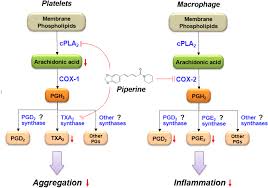The Prevalence of Childhood Overweight and Obesity
The Prevalence of Childhood Overweight and Obesity: The time bomb in waiting

The prevalence of childhood overweight and obesity is worrying. If we don’t correct things now, we may be passing the wrong mantle to the next generation
In the resent past the available statistics about the prevalence of childhood overweight and obesity has been on the rise. Yet there is very little indication that it is soon going away, at least from the statistics available. Even though it is a global problem, US is one of the country that is most affected with records showing that in just three decades the problem has tripled. Currently it is estimated that one in five children in the US is overweight. Despite this worrying trend, experts are reporting that even the already overweight children are further becoming heavier every day. And as if that is not enough, there is fear that the overweight or obese preschool going children are 5 times more likely than normal-weight children to be overweight or obese as adults. It is because of this that childhood overweight is regarded as the most common prevalent nutritional disorder of US children and adolescents, and one of the most common problems seen by pediatricians.
For how long are we going to keep making reference to the statistic that does not appear to change in the right direction? Like minded professionals like doctor Dalal Akoury are among those who are doing all it takes to bring a difference. In her effort to impact positively in people’s lives Dr. Akoury founded a medical center (AWAREmed Health and Wellness Resource Center) whose main objective is to transform each individual’s life through increasing awareness about health and wellness and by empowering individuals to find their own inner healing power. Our children should not be allowed to go through this. We are all aware of the health complications associated with being overweight or obese. I pose a question to you do you want them to face the chronic diseases associated with overweight and obesity? I can guess your answer is NO and that is why Dr. Akoury’s practice focuses on personalized medicine through healthy lifestyle choices that deal with primary prevention and underlying causes instead of patching up symptoms. If you could start by scheduling for an appointment with her to get her professional input in all this, then you will be taking the first relay line towards eliminating the prevalence of childhood overweight and obesity.
The Prevalence of Childhood Overweight and Obesity: Consequences of Childhood Overweight
The consequences of being overweight or obese are not anything you would wish for your worse enemies. Both the short term and long term effects of overweight on health are of concern because of the negative psychological and health consequences in childhood. We are often told that we have this life once and we can only live it that way. If we are in agreement with that then I want to pose a second question. Why do we allow the following negative psychological overweight outcomes to ruin the life of our children?
- Depressive symptoms
- Poor Body Image
- Low Self-Concept
- Risk for Eating Disorders
- Behavior and Learning Problems
The negative effects are not just psychological but also come with negative health consequences. The following are some of the health consequences we are subjecting our children to if we don’t make a complete overhaul of our attitude towards obesity and overweight:
- Type 2 Diabetes
- Low HDL Cholesterol levels in the blood
- Non-alcoholic steatohepatitis (fatty infiltration and inflammation of the liver)
- Asthma
- Hypertension
- Sleep Apnea
- Insulin Resistance
- Early puberty
- Orthopedic problems such as Blount’s disease and slipped capital femoral epiphysis
- High Total and LDL Cholesterol and triglyceride levels in the blood
Besides this if nothing is done then the communication we are passing on is that, this is a problem to be passed to the next generation and the vicious cycle continues. Nevertheless, obese children are more likely to be obese as adults, hence they are at increased risk for a number of diseases including: stroke, cardiovascular disease, hypertension, diabetes, and some cancers.
The Prevalence of Childhood Overweight and Obesity: Contributors to Childhood Overweight
Food Choices – diets higher in calories (including fats and simple sugars) and lower in fruits and vegetables are linked with overweight
Physical Activity vs. Sedentary Activity – less physical activity and more time spent participating in activities such as watching TV results in less energy expenditure
Parental Obesity – children of obese parents are more likely to be overweight themselves. There is an inherited component to childhood overweight that makes it easier for some children to become overweight than others. There are a number of single gene mutations (“genetic alterations”) that are capable of causing severe childhood overweight, though these are rare. Even children with genetic risk for overweight will still only become overweight if they consume more calories than they use. Parental obesity may also reflect a family environment that promotes excess eating and insufficient activity.
Eating Patterns – skipping meals or failure to maintain a regular eating schedule can result in increased intakes when food is eaten.
Parenting Style – some researchers believe that excess parental control over children’s eating might lead to poor self-regulation of kid’s energy intake.
Diabetes during pregnancy – overweight and type 2 diabetes occur with greater frequency in the offspring of diabetic mothers (who are also more likely to be obese)
Low Birth Weight – Low birth weight is a risk factor for overweight in several epidemiological studies.
Excessive weight gain during pregnancy – Several studies have shown that excessive maternal weight gain during pregnancy is associated with increased birth weight and overweight later in life.
Formula Feeding – Breast feeding is generally recommended over formula feeding. Although the exact mechanism in unknown, several long-term studies suggest that breast feeding may prevent excess weight gain as children grow.
Parental Eating and Physical Activity Habits – Parents with poor nutritional habits and who lead sedentary lifestyles role model these behaviors for their children, thereby creating an “obesigenic” home environment.
Demographic Factors – Certain demographic factors are associated with an increased risk of being overweight in childhood. For example, there is evidence that African-American and Hispanic children 6 to 11 years old are more likely to be overweight than are non-Hispanic white children of the same age. Asian and Pacific Islander children of the same age were slightly less likely to be overweight.
The Prevalence of Childhood Overweight and Obesity: The time bomb in waiting




